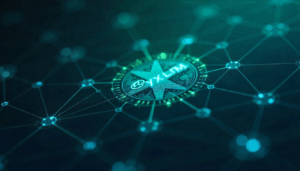Reinforcement Learning Explained: How AI Improves Through Experience
Artificial Intelligence (AI) is advancing rapidly, making its way into many aspects of modern life—from smart devices to autonomous systems. One of the most intriguing ways AI learns and adapts is through a method called reinforcement learning (RL). But how does this approach actually work?
This article breaks down the basics of reinforcement learning and explores how it enables AI to grow through trial and error.
Defining Reinforcement Learning
Reinforcement learning is a machine learning strategy in which an AI agent learns optimal behaviors by interacting with an environment and receiving feedback. Rather than being explicitly instructed, the agent makes choices, sees the results, and adjusts its actions accordingly.
Picture training a child to ride a bike. The child may fall at first, but with each attempt and bit of encouragement or correction, they learn what works. Reinforcement learning applies a similar principle to machines.
The Concept of Reward-Based Learning
In reinforcement learning, everything revolves around reward signals:
- The AI receives positive reinforcement when it performs an action that brings favorable results
- It may receive negative feedback or no reward when the action is ineffective or undesirable
By striving to earn as many rewards as possible, the AI improves its decision-making over time.
How It Works: The Learning Cycle
Here’s a simplified view of reinforcement learning in action:
- Agent
The AI or system trying to learn, such as a bot, drone, or program. - Environment
The space or scenario where the agent operates (e.g., a virtual world, real-world task, or simulation). - Actions
The options or moves available to the agent. - Feedback (Reward/Penalty)
Responses from the environment that indicate whether an action was beneficial.
The agent learns by exploring different paths and keeping track of what leads to the best rewards. It eventually develops a policy, or a decision strategy, to maximize performance.
Where Reinforcement Learning Is Used
Reinforcement learning powers many real-world technologies, such as:
✅ AI in Gaming
Programs like AlphaGo became champions by repeatedly playing and improving their gameplay through RL strategies.
✅ Robotic Automation
Robots use RL to master tasks like walking, object manipulation, or environment mapping.
✅ Personalization Systems
Some recommendation engines use RL to tailor suggestions based on how users respond to previous content.
✅ Self-Driving Cars
Autonomous vehicles apply RL to learn safe driving behaviors, such as lane switching or obstacle avoidance, from simulations and real scenarios.
Limitations and Challenges
Despite its success, reinforcement learning has its difficulties:
- It Needs a Lot of Data
Many experiments and interactions are needed before an agent starts performing well. - Complex Environments
The more dynamic or unpredictable the environment, the harder it is for the agent to figure out effective strategies. - Real-World Risk
In applications like healthcare or driving, learning through failure can be risky, requiring safer training methods like virtual simulations.
Why It’s Important
What makes reinforcement learning so valuable is its flexibility and adaptability. Rather than relying on hardcoded rules, RL allows systems to:
- Learn by doing
- Adjust to new environments
- Discover solutions that weren’t explicitly programmed
This makes it a cornerstone for developing intelligent systems capable of handling uncertainty and change.
Final Words
Reinforcement learning is reshaping how AI systems learn and evolve. By allowing machines to improve through their own experiences—guided by rewards and consequences—RL is opening the door to smarter, more autonomous technology.
As this field grows, we can expect reinforcement learning to play an even bigger role in everything from robotics to business automation.
Share this content:













